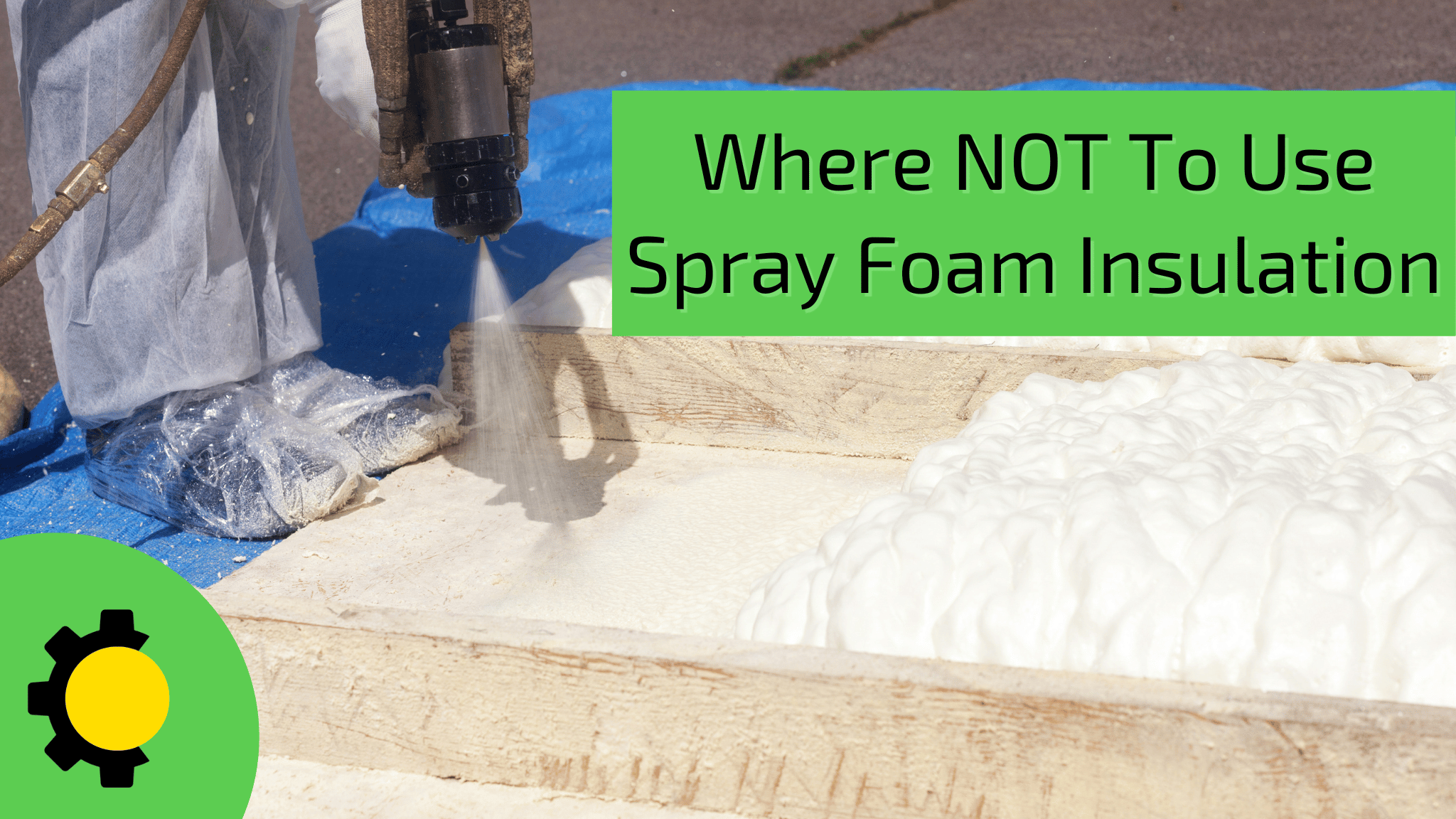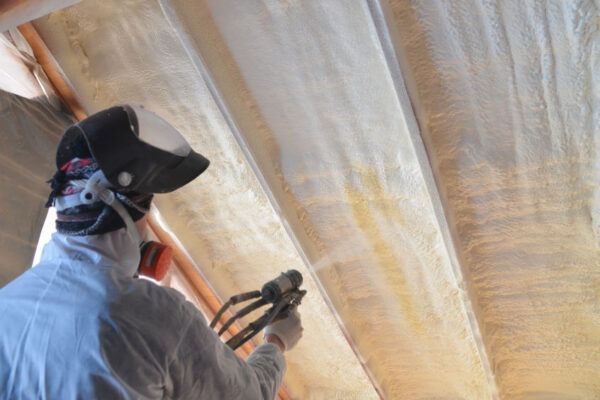The Environmental Impact of Spray Foam: Sustainability Considerations
The Environmental Impact of Spray Foam: Sustainability Considerations
Blog Article
Spray Foam: The Ultimate Solution for Air Sealing and Insulation
Spray foam insulation has become a leading solution for effective air sealing and thermal insulation, supplying an unique combination of buildings that set it aside from standard approaches. Its ability to expand and fill up spaces makes it particularly effective in stopping air leak, which can dramatically impact energy efficiency. Understanding the complete extent of its advantages, installment procedures, and contrasts with various other insulation kinds is vital for making educated choices. As we discover these elements, the ramifications for both new buildings and retrofits end up being progressively significant. What elements should influence your selection?
What Is Spray Foam?
Spray foam is a functional insulation product that combines the concepts of air securing and thermal resistance to enhance power performance in buildings. Made up mostly of polyurethane or other comparable substances, spray foam is applied as a fluid that broadens upon contact with surface areas, producing a strong, continuous layer of insulation. This one-of-a-kind residential property enables it to fill up spaces, fractures, and voids that typical insulation materials might neglect, providing a premium air seal.
There are 2 main kinds of spray foam: open-cell and closed-cell. Open-cell spray foam is lighter and much more adaptable, providing excellent noise absorption and a lower R-value per inch - Spray Foam. In comparison, closed-cell spray foam is denser, providing a greater R-value, moisture resistance, and added architectural integrity to constructing components
The application procedure generally entails specialized devices, ensuring a seamless application that sticks to various substratums, consisting of timber, concrete, and metal. This adaptability makes spray foam appropriate for both brand-new constructions and retrofitting existing frameworks. Its capacity to create a closed obstacle significantly adds to minimizing power consumption and enhancing interior air top quality, thereby making it a favored option amongst contractors and home owners alike.
Benefits of Spray Foam Insulation
One of the most considerable benefits of spray foam insulation is its exceptional ability to create a continuous air barrier, which successfully lessens power loss. Unlike standard insulation products, spray foam increases to load voids and splits, making certain that air leak is significantly decreased. This characteristic not only enhances energy performance yet additionally brings about decrease energy expenses in time.
Furthermore, spray foam insulation offers exceptional thermal resistance, adding to an extra secure indoor setting. Its high R-value per inch permits reliable insulation in constrained areas, making it optimal for attics, walls, and crawl rooms. The moisture-resistant residential properties of spray foam assistance prevent mold and mildew and mildew growth, advertising healthier living problems.
One more crucial advantage of spray foam insulation is its sound-dampening high qualities (Spray Foam). It efficiently lowers noise transmission in between spaces, creating a quieter and a lot more comfortable home setting. The toughness of spray foam likewise attracts attention, as it does not sag or settle gradually, maintaining its efficiency throughout its lifespan
Exactly How Spray Foam Works
Comprehending just how spray foam insulation works is crucial for appreciating its performance in air sealing and thermal resistance. Spray foam insulation contains 2 main parts: isocyanate and polyol resin. When these elements are combined, they undergo a chain reaction that causes the material to increase rapidly, producing a thick foam description that fills cavities, gaps, and fractures.
As the foam broadens, it sticks to surfaces, developing a closed seal that significantly decreases air seepage. This characteristic makes spray foam insulation highly efficient at protecting against drafts and dampness penetration, which can result in energy loss and damage gradually. In addition, the closed-cell version of spray foam supplies superior thermal resistance due to its rigid structure, efficiently lessening warmth transfer.
The one-of-a-kind properties of spray foam allow it to comply with irregular surfaces, guaranteeing extensive protection and a seamless barrier. Because of this, spray foam insulation not just boosts power performance however likewise contributes to enhanced indoor air quality by minimizing the buildup of irritants and pollutants. Inevitably, recognizing the technicians behind spray foam emphasizes its function as a remarkable option for insulation and air sealing in both business and property applications.
Installation Refine Introduction

Before setup, the room should be appropriately cleaned and prepped, making sure that surface areas are without moisture, dust, and debris. Due to the fact that impurities can compromise adhesion and overall performance, this step is vital. As soon as the location is prepared, the application entails blending the two components of the spray foam, which expands upon get in touch with and fills up spaces successfully.
Educated specialists need to carry out the installation, using customized tools to make certain consistent insurance coverage and optimum thickness. Security safety measures, consisting of putting on safety equipment and making sure appropriate air flow, are critical during this process. After application, the foam commonly remedies quickly, creating a solid barrier that enhances energy efficiency.
Contrasting Spray Foam to Typical Insulation
When reviewing insulation alternatives, spray foam insulation attracts attention in contrast to conventional products such as fiberglass and cellulose. Among the main advantages of spray foam is its superior air securing abilities. Unlike fiberglass and cellulose, which can allow air infiltration, spray foam increases upon application, filling up spaces and gaps to produce an airtight seal. This causes improved energy effectiveness, as less warmed or cooled air escapes the home, bring about lower energy expenses.
In addition, spray foam supplies a higher R-value per inch than standard insulation types, using even more efficient thermal resistance in a thinner account. This characteristic is specifically useful in rooms with restricted dental caries depth. In addition, spray foam is resistant to wetness and mold and mildew growth, which can be a substantial concern with cellulose and fiberglass, especially in moist atmospheres.
Nevertheless, spray foam insulation typically carries a greater ahead of time cost than its conventional equivalents. Homeowners need to consider this initial investment against long-lasting power financial savings and performance benefits. Eventually, while both insulation kinds offer their objective, spray foam emerges as an advanced option for modern insulation demands, particularly in terms of air sealing and thermal efficiency.

Verdict
In recap, spray foam insulation stands for a very reliable option for accomplishing ideal air sealing and thermal resistance. Its distinct residential properties, consisting of wetness resistance and sound dampening, make it suitable for various applications in both brand-new building and constructions my link and retrofitting jobs (Spray Foam). The initial prices might be higher contrasted to standard insulation materials, the long-term advantages, such as considerable energy financial savings and enhanced interior air high quality, justify the financial investment and highlight its value in modern-day building techniques.
Spray foam insulation has emerged as a leading option for effective air securing and thermal insulation, providing an unique mix of homes that set it apart from standard methods.Spray foam is a functional insulation material that incorporates the principles of air securing and thermal resistance to enhance power efficiency in buildings.When reviewing insulation choices, spray foam insulation stands out in contrast to conventional products such as fiberglass and cellulose. Ultimately, while both insulation kinds offer their purpose, spray foam arises as a more sophisticated remedy for modern insulation requirements, particularly in terms of air sealing and thermal effectiveness.
In recap, spray foam insulation represents an extremely reliable service for attaining optimal air sealing and thermal resistance.
Report this page